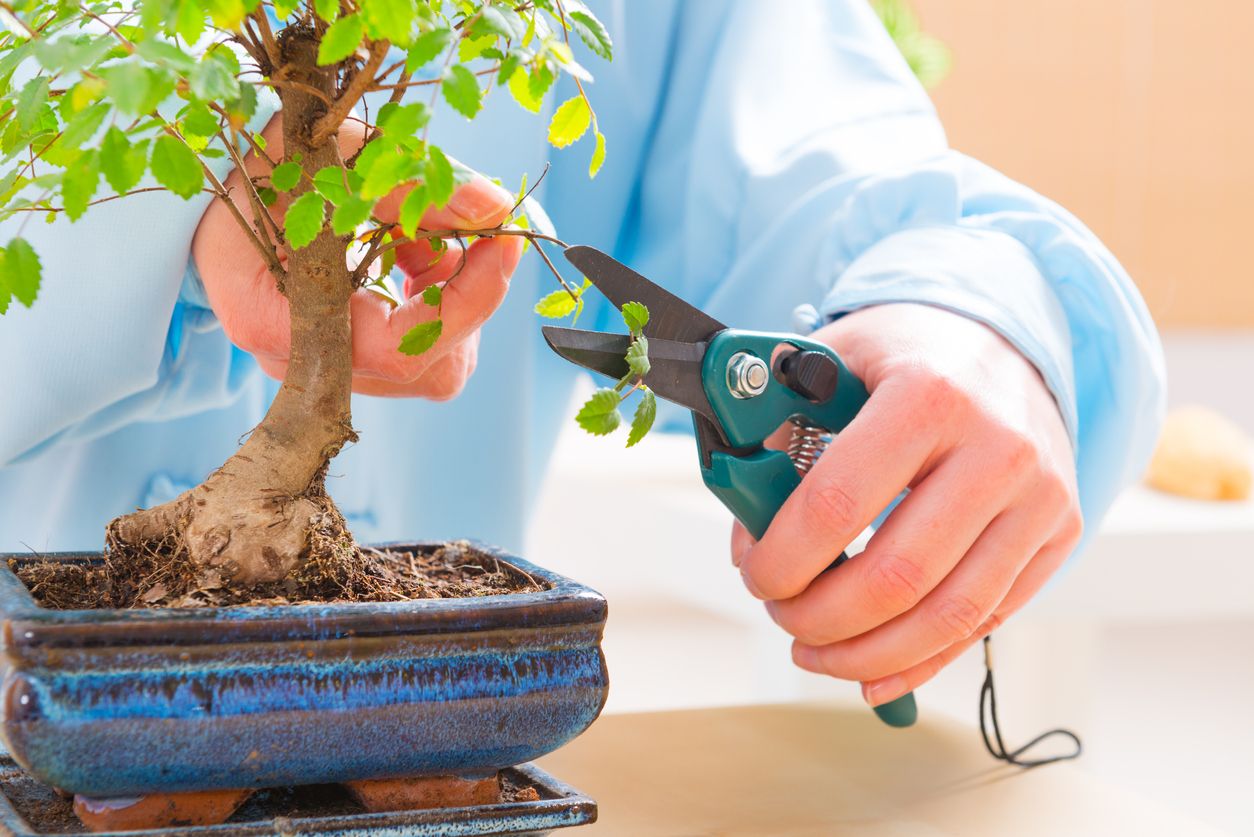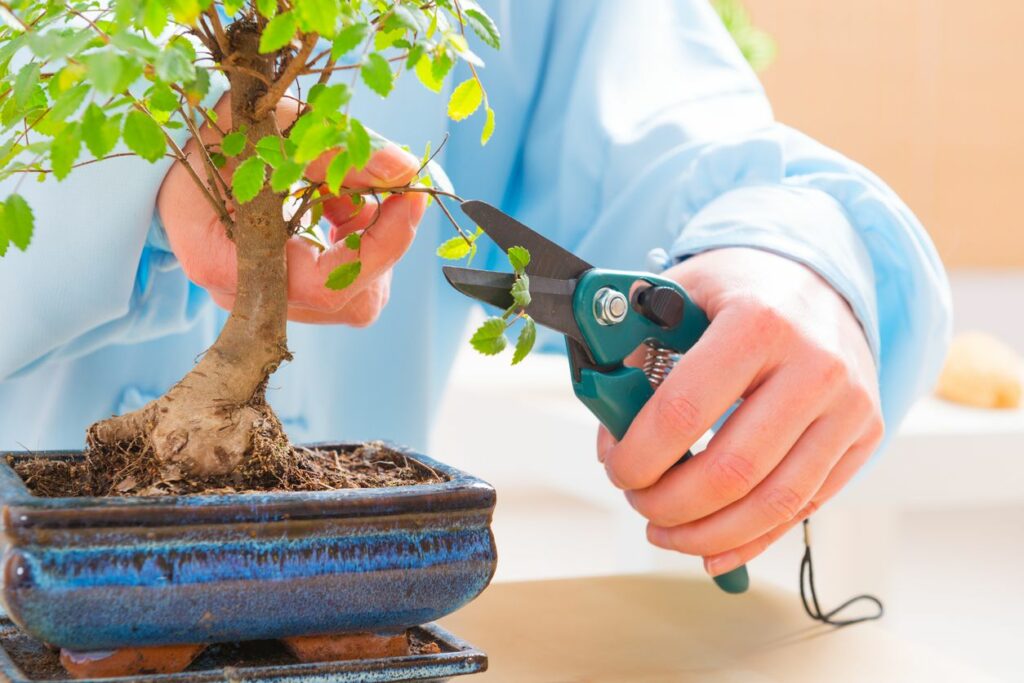Bonsai Tree – Grow, Style, And Care For Your First Bonsai Tree
The bonsai tree adventure is a beautiful journey with a tree that will stay with you for your whole life. A miniature tree growing in a small pot, it doesn’t get any better than that. Patience and work are prerequisites of a successful bonsai tree. For some, caring for the bonsai is like meditation. It takes years of nurturing and care to yield great results but sometimes, it’s the journey that counts.
If you are new to the wonderful world of bonsai, you must have a lot of questions. Like where to start? Which bonsai species to begin with? Indoors or outdoors? How about the tools, stylings, and care? This article answers all these questions and guides you through getting your first bonsai successfully growing.
Best Bonsai Tree Species
Agriculturalists have tried their hand with just about every tree imaginable. The idea was that every tree could be styled to become a mini-tree. They had success with some species while other trees just refused to cooperate. Here are some of the species that you can start with. Some are easier to grow and style than others.
- Ficus: One of the best species for beginners to grow as bonsai. Of all the 2000 Ficus species to choose from, the Ficus Retusa is by far the easiest to grow and maintain. Ficus Ginseng is another species popular with its pot-bellied trunk and is more suitable for indoor growing.
- Juniper: Evergreen coniferous trees that make excellent bonsai. They are quite common and easy to get from any general store let alone a nursery. Distinguished with scale-like foliage the color ranges from yellowish-green to silver-green.
- Japanese Maple: Known for their dark red bark and pointed leaves with five lobes. As it ages the bark turns gray. It blooms clusters of yellow flowers between May and June every year. Some varieties have red leaves.
- Chinese Elm: In the wild, the tree can reach 80 feet but as bonsai, it grows to under 3 feet. The tree has intricate branches and small leaves making it ideal as a bonsai.
- Carmona: An indoor bonsai with shiny dark-green leaves. They have tiny spots on the topside and fine hairs underneath. The flower all year and the tiny white blooms are beautiful, matched only by the small red berries.
- Azalea: Different azalea species have different flowers, but they are all stunning looking and bloom between May and June of every year. Some azalea cultivars are evergreens.
Tools you Need
Needless to say that the tools you’ll need for growing, styling, and caring for your bonsai are different from your regular gardening tools. Here you’ll need special tools to prune and train the branches and twigs. Even the rootball needs specific tools to handle the constant repotting.
- Shears and Pliers: These are small tools to cut and prune branches, leaves, twigs, and roots. You’ll also need concave cutters to achieve deep cuts when removing branches off the trunk.
- Saws and Knives: Yes there will be times when you need to cut a thick branch that neither prunes nor pliers could remove. Saws come in handy as your bonsai tree grows thicker and sturdier. You’ll also need grafting knives to smooth the scars left by the saws.
- Root Tools: You will be working with the rootballs of the bonsai a lot. For that, you’ll need sickle saws and sickle knives of different shapes and sizes. Roots need pruning as well as part of the overall bonsai maintenance.
- Wiring Tools: Wiring comes with the territory as far as bonsai styling is concerned. Stock up on wires of different lengths and diameters as well as pliers and wire cutters. The smaller the better in this case.
- Protective Material: When your tree grows stouter and you need to bend a thick branch, you will need protective materials to prevent the branch from snapping. You also need things like wet raffia and fusing rubber tape to protect the branches before wiring them. Rubber tubes are important to protect the trunk.
- Electric Powertools: You need extreme caution when using these tools since a slight mistake could have long-lasting damage to the bonsai.
How to Grow your First Bonsai Tree
Starting a bonsai tree is not very different from growing any other tree. You could start it from a seed or a cutting. Seeds usually need a lot more time, so it’s easier to start from a cutting. Here’s how you can grow your first bonsai tree from a cutting.
- The best time to get a cutting and plant it for your first bonsai is in the spring or summer.
- Select a large and relatively shallow container. A plastic container is better than a clay pot since it’s easier to handle.
- Fill the bottom of the container with a layer of gravel or lava rock for drainage.
- Cover the gravel with a thick layer of bonsai soil. This is a special potting mix you can buy at the store.
- Cut a few healthy twigs or branches off a fully grown tree like a ficus or juniper.
- Use pruning shears or a sharp blade to cut the end of the twig at a 45 degrees angle.
- Dip the end of the cutting in a growth hormone powder to improve its chances of developing roots.
- Shake off the excess powder and dig a 2-inch deep hole in the soil.
- Plant the cutting in the soil and fill the hole with soil and pack it to push out air pockets keep the cutting standing upright.
- You can plant as many cuttings in the same container. Later you can select which one to keep.
- Water the soil thoroughly to help the soil settle.
- Keep the soil moist until the cutting develops roots. This usually takes place after a couple of weeks from the time you plant it.
Bonsai Tree Styling
By now you probably gathered that a bonsai tree is just a normal tree that gets trained and pruned to become a dwarf. This is called styling the bonsai tree. It usually involves pruning and wiring.
Pruning
Pruning a bonsai is different from pruning a regular tree or plant. Usually, you perform two types of pruning to get your bonsai tree in the shape and size you want. The first is structural pruning. This is the most important step that keeps your bonsai dwarfed but growing naturally. Here you focus on the large branches of the tree to restructure the bonsai. It’s important to choose which branches stay and which ones have to be removed. This process decides the shape of the bonsai for the rest of its life. So you need to be careful and deliberate in your pruning.
The second type of pruning, maintenance pruning, and you need to perform it during the growing season. This pruning is mainly about the outer and top branches and twigs. It doesn’t impact the structure of the bonsai. Don’t worry if you make a mistake here. If you clip off a twig too deep, it will grow back.
Wiring
If pruning keeps the bonsai tree short and compact, wiring gives it its distinctive shape. As you know, not two bonsai trees look the same. It involves using wires to bend and reshape the branches of the bonsai. Wiring is different from pruning as it takes time and patience to get the branches positioned the way you like. This could mean having to keep the branches wired for months before you remove the wires.
There are two types of bonsai wiring. The first is double wiring. This involves tying up two branches together to give them support. You should pick branches of the same thickness that are close to each other. Don’t wire more than two branches together. Start from the main branches and work your way up to the top twigs.
The other type is single branch wiring. You apply it on a single branch to change its shape, direction, or position. In general, you need to be careful not to bend the branch at a narrow angle since it could break. Also, try not to cross the wires. Make sure you have enough wire length to get the job done and use protective material before you apply the wires.
Bonsai Tree Care
Apart from pruning and wiring, caring for your bonsai tree is not very much different from caring for any other plant. You still need to water, feed, and repot it. You also need to make sure it has enough light and temperature.
Soil
You might have noticed that there’s a lot of work involved in growing, styling, and caring for a bonsai tree. That also applies to the type of soil your bonsai needs. It has to be a special potting mix specifically designed for bonsai. It is rich soil full of nutrients to keep a tree growing in a small container. At the same time, the soil should be well-drained with good aeration yet retains water. Since you’ll be using a lot of soil and repotting, it might cost-effective to make your own potting mix. The main ingredients are Akadama, Pumice, and lava rock at a ratio of 2:1:1. You can also add grit and organic potting compost to get the right texture.
Watering
When you water your bonsai tree you need to keep in mind its individual needs. This is not a routine task you perform. Your bonsai needs plenty of attention. So always wait for the soil to go slightly dry before you water the tree. Always use a watering can and pour the water from the top so it won’t wash away the soil. Depending on the species of the bonsai you need to provide adequate humidity levels as well.
Fertilizing
Sometimes it’s easy to forget that you’re dealing with a tree, not a houseplant when caring for your first bonsai tree. This means you might forget to fertilize it. But a well-balanced 6-6-6 fertilizer is important for the health and growth of the bonsai. You will need to apply it throughout the growing season from the spring to the fall. But as the tree ages, you can hold off the fertilizer since its growth slows down. Experts recommend a 10-6-6 fertilizer high in nitrogen in the spring and a 3-6-6 one that is low in nitrogen in the fall. As for the summer, you can use a balanced type.
Repotting
There’s no one rule for repotting that fits all bonsai tree species. A fast-growing bonsai will need repotting once a year. It also depends on the size of the container and the age of the bonsai. A young bonsai usually grows faster than an aged or mature one. Every spring before the growth season, check the roots of the bonsai. If they wrap around themselves that means the root system has outgrown the container. That’s also the best time to repot the bonsai.
When repotting, carefully remove the old soil from the roots of the bonsai using a chopstick. Trim the overgrown roots with scissors back to about one-third of the original length. Fill the new larger container with a suitable potting mix and plant the bonsai.

